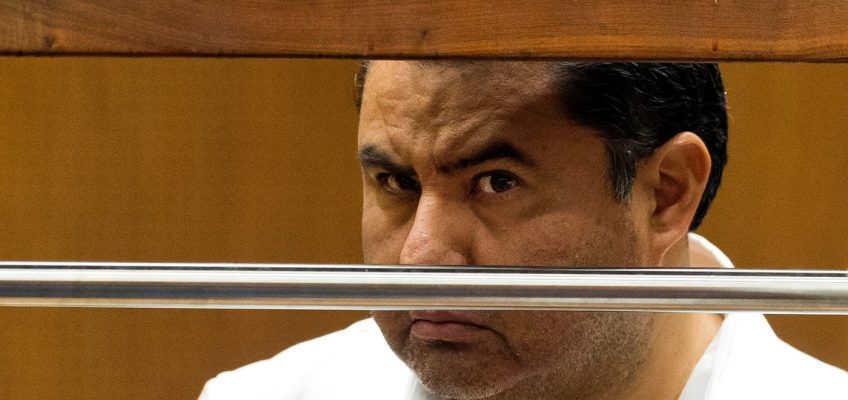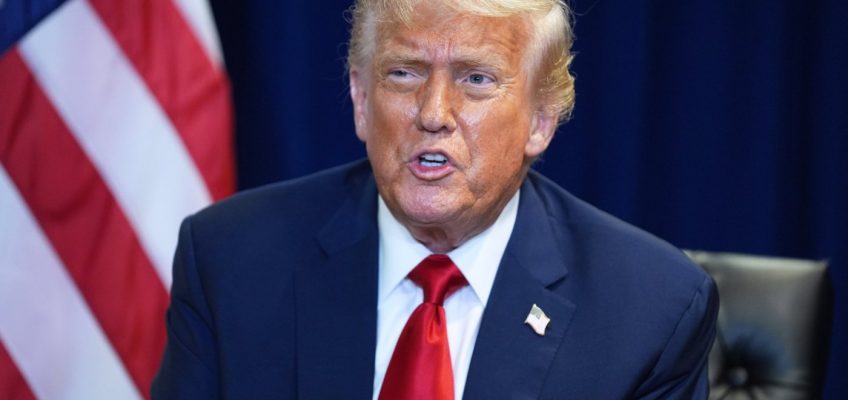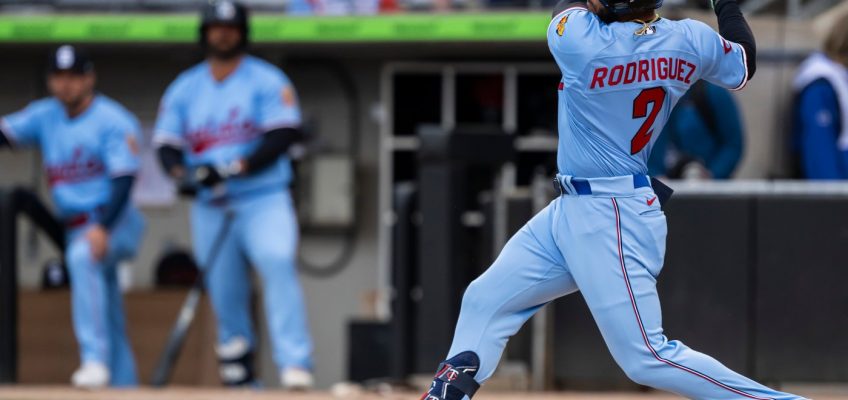By LAURAN NEERGAARD, AP Medical Writer
WASHINGTON (AP) — President Donald Trump announced Monday that his administration is strongly recommending that women limit Tylenol use during pregnancy unless medically necessary. “I want to say it like it is, don’t take Tylenol,” he said, encouraging women to “just fight like hell not to take it.” But his comments came under intense criticism from medical experts and researchers — because there’s no proof tying the painkiller to autism. He also made a number of dubious claims about autism, vaccines and treatments.
Trump administration designates Barrio 18 gang as foreign terrorist organization
Scientists rebuke Trump’s Tylenol-autism claim, stress fever is bigger danger in pregnancy
Trump says he now believes Ukraine can win back all territory lost to Russia with NATO’s help
Lowering the temperature: Tips for transcending our polarized politics
Are young people more likely to support political violence than older people?
Here’s a look at the facts.
Are autism rates increasing?
TRUMP: “Since 2000, autism rates have surged by much more than 400%.” He said the rate used to be 1 in 20,000, then 1 in 10,000 and now is 1 in 31, saying “there’s something artificial” to explain it.
THE FACTS: It’s true that autism rates have ballooned but Trump’s numbers are off. The 1 in 10,000 figure dates back to the 1990s. In 2000, the Centers for Disease Control and Prevention put the rate at 1 in 150. In 2018, it was 1 in 44. The latest count, based on 2022 data, is 1 in 31.
Scientists say the explanation is that decades ago diagnosis was rare, given only to kids with severe problems. Diagnosis of “autism spectrum disorder” began jumping as scientists learned the developmental disorder encompasses a wide range of traits and symptoms. And as educational and other services grew, more parents began seeking diagnoses to help their kids.
Does maternal Tylenol use increase the baby’s chances of autism?
TRUMP: “Tylenol during pregnancy can be associated with a very increased risk of autism.”
THE FACTS: Studies don’t prove that. Even Trump’s Food and Drug Administration didn’t go nearly that far in a letter to doctors this week that instead they “should consider minimizing” acetaminophen’s use in pregnancy.
It’s clear that genetics are the biggest risk factor. Other risks include the age of a child’s father, preterm birth and whether the mother had health problems during pregnancy such as fevers, infections or diabetes.
Some studies have raised the possibility of a link between autism risk and using acetaminophen during pregnancy — but more haven’t found a connection.
These are observational studies that compare health records about prenatal acetaminophen and autism traits in children. The big problem: Those kinds of studies can’t tell if the painkiller really made any difference – or if instead it was the fever or other health problem that prompted the need for the pill.
The Coalition of Autism Scientists notes that use of acetaminophen – or paracetamol as it’s known outside the U.S. — during pregnancy hasn’t increased in recent decades like autism rates have.
The risks of not treating a fever
TRUMP: “There’s no downside in not taking it,” he said in urging women to not take Tylenol during pregnancy.
THE FACTS: There are huge downsides to avoiding Tylenol when a pregnant woman really needs it, according to the nation’s leading pregnancy doctors. Untreated fevers, for example, can increase the risk of birth defects, premature birth and miscarriages, according to the Society for Maternal-Fetal Medicine.
Both the society and the American College of Obstetricians and Gynecologists say the painkiller is a safe and needed option during pregnancy. The over-the-counter drug’s label already tells pregnant women to consult their doctor about its use.
“The conditions people use acetaminophen to treat during pregnancy are far more dangerous than any theoretical risks,” ACOG said.
Autism has been gaining in visibility in Cuba
TRUMP: ““I hear Cuba doesn’t have it because it’s very expensive and they don’t have the money to have it, or they don’t want to spend the money to have it. They don’t have Tylenol. And I hear they have essentially no autism.”
THE FACTS: In Cuba, as in many regions around the world, autism has begun to gain visibility in recent years. Awareness campaigns have been launched on state television to promote the inclusion of autistic people. And according to Ministry of Education psychologist Lisbet Rizo Suárez, Cuba has nine educational institutions to serve autistic children.
As for paracetamol, as Tylenol is known outside of the U.S., it is widely used in Cuba and doctors prescribe it without restrictions.
Autism is found in Amish communities
TRUMP, saying certain groups that don’t take vaccines or pills have no autism, “the Amish, is an example. They have essentially no autism.”
THE FACTS: This is false. While there is limited scientific data around autism in the Amish community, studies have found that there are cases. A 2010 paper from the International Society for Autism Research found autism was less prevalent in Amish communities than the U.S. overall, but it called for further study to determine how “cultural norms and customs” played a role in the numbers.
Braxton Mitchell, an epidemiologist at the University of Maryland School of Medicine who has worked with the Amish community for 30 years, said his group has confirmed there is autism in the community. He said Tylenol is used by many Amish and some choose to vaccinate their children, others do not.
But he said it is a challenge to gather reliable data on the subject because autism and other related conditions require clinical assessments and expert diagnosis, which Amish families may not seek out.
Trump overstates childhood vaccinations
TRUMP: “You have a little child, a little fragile child, and you get a vat of 80 different vaccines, I guess, 80 different blends.”
THE FACTS: The current childhood vaccination schedule recommends routine protection against 18 diseases. They’re not all given to “a little child” but at different ages.
How many shots that adds up to between birth and age 18 can vary. The number is closer to three dozen if you don’t count once-a-year flu shots or an annual COVID-19 vaccine.
Vaccines have been proven to protect children from once common deadly diseases. There is no evidence that the schedule is harmful.
As for autism, scientists and leading advocacy groups for people with autism agree there’s no vaccine link to the disorder.
“Studies have repeatedly found no credible link between life-saving childhood vaccines and autism. This research, in many countries, involving thousands of individuals, has spanned multiple decades. Any effort to misrepresent sound, strong science poses a threat to the health of children,” said Dr. Susan Kressly of the American Academy of Pediatrics.
Why infants should get a hepatitis B vaccine
TRUMP: “Hepatitis B is sexually transmitted. There’s no reason to give a baby that’s almost just born Hepatitis B. So I would say wait till the baby is 12 years old and formed.”
THE FACTS: Hepatitis B can cause serious liver damage and it’s true that in adults, the virus is spread through sex or sharing needles during injection-drug use.
But for babies, it’s a different story. If a pregnant woman carries the virus, she can pass it to her baby during delivery. While mothers-to-be are supposed to be tested, not all are. The virus also can live on surfaces for more than seven days at room temperature, meaning unvaccinated infants living with anyone with a chronic infection can be at risk.
Since 2005, U.S. health officials have recommended giving the first dose of a hepatitis B vaccine within 24 hours of birth for most infants. As a result, infant infections have dropped sharply.
The issue with up MMR vaccines
TRUMP: The MMR, I think, should be taken separately. This is based on what I feel, the, mumps, measles and and the three should be taken separately. And it seems to be that when you mix them, there could be a problem. So there’s no downside in taking them separately. In fact, they think it’s better.”
THE FACTS: Trump is referring to the vaccine that combines protection against measles, mumps and rubella. And his suggestion of separating that one combination shot into three isn’t possible. According to the American Academy of Pediatrics, there are no single-antigen versions – no measles-only, mumps-only, rubella-only shots – available.
Early concern about a possible link between vaccines and autism arose from falsified information about the MMR vaccine in a 1998 paper that was later retracted by the medical journal that published it.
Would it be safer for parents to break up vaccines for infants?
TRUMP: On spacing out vaccines for infants, “Break up your visits to the doctors. Break them up.”
THE FACTS: That message infuriates pediatricians.
“Spacing out or delaying vaccines means children will not have immunity against these diseases at times when they are most at risk,” said Kressly, the president of the AAP.
It’s also hard for parents to make repeat visits for vaccinations outside of the normal well-baby schedule.
Trump touts an unproven treatment for autism
TRUMP, discussing a possible new treatment: “And the baby can get better, and in some cases may be substantially better.”
THE FACTS: That’s not proven, at least not yet. Trump was referring to a folic acid metabolite called leucovorin – and it’s far from clear if it’s really an effective treatment and if so, for which people.
Low levels of folate, a form of vitamin B, are linked to certain birth defects so women already are told to take folic acid before conception and during pregnancy.
A small percentage of people with autism also appear to have low levels of folate in their brains, possibly because of antibodies that block it. The Autism Science Foundation cautions that their non-autistic relatives also often have those antibodies, suggesting that’s not a cause of autism.
But the theory is that giving folate to that subset of autistic people might improve certain symptoms. Only a few very small clinical trials have been done with the drug. So the foundation and other autism experts say large, rigorous studies are needed before it can be recommended as a treatment.
Associated Press journalists Andrea Rodriguez in Havana and Barbara Whitaker in New York contributed reporting.
The Associated Press Health and Science Department receives support from the Howard Hughes Medical Institute’s Science and Educational Media Group and the Robert Wood Johnson Foundation. The AP is solely responsible for all content.
Find AP Fact Checks here: https://apnews.com/APFactCheck.




